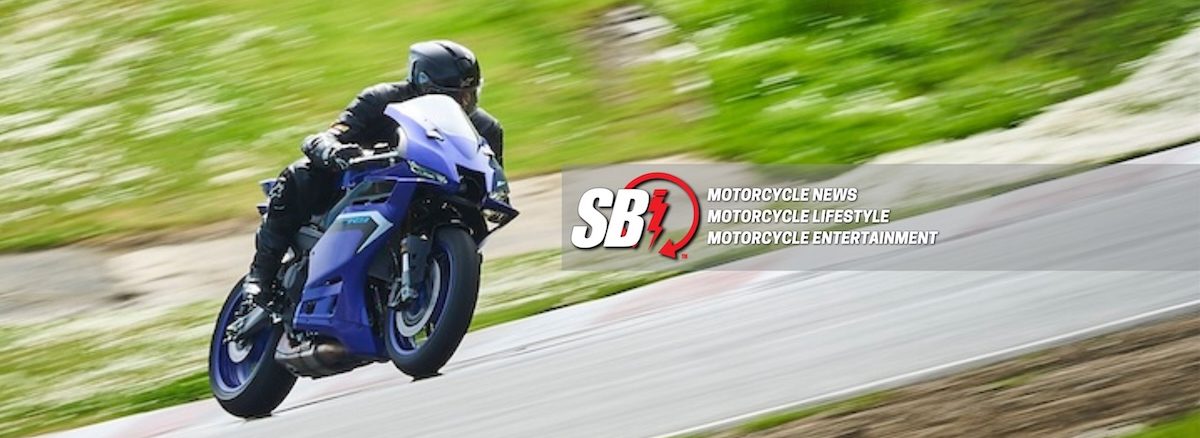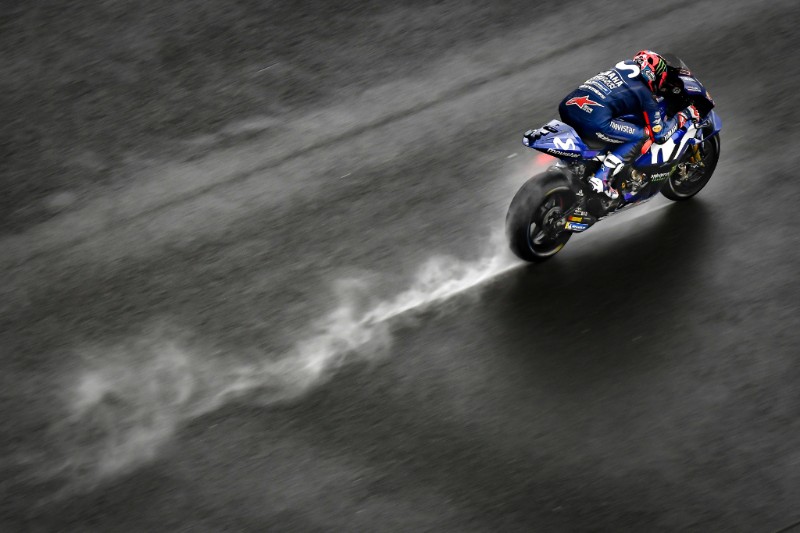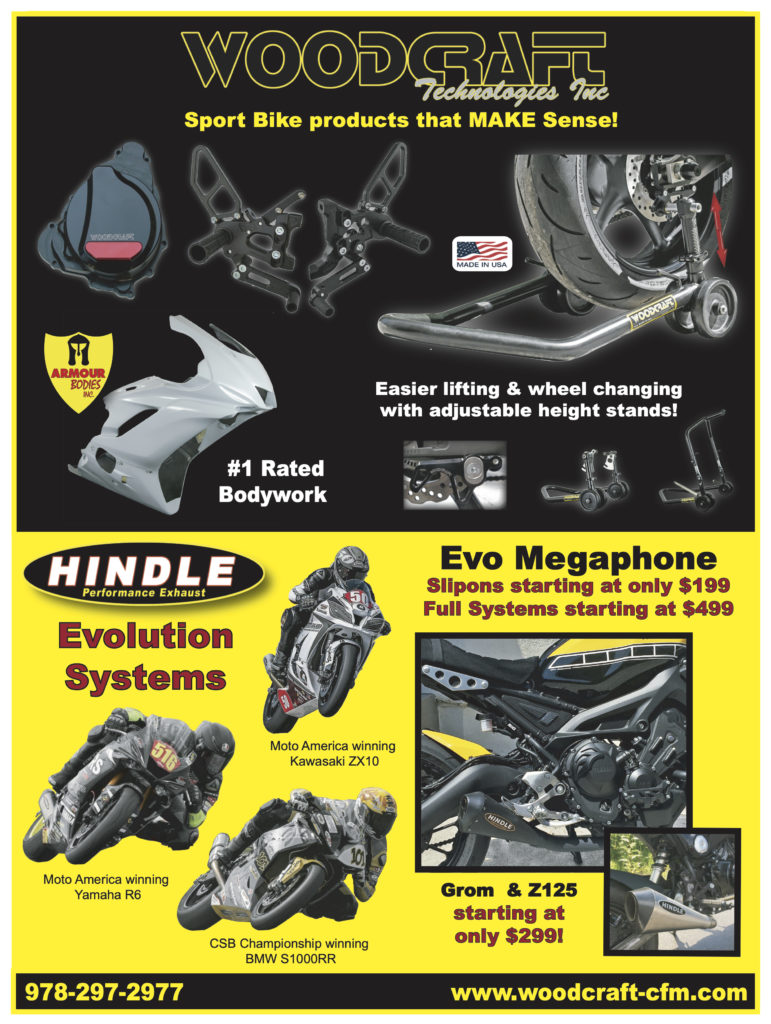Rain. For many people who ride the racetrack, it’s a four-letter word that rivals old age and taxes. Sooner or later it will be something you have to deal with. However, like many things in life, if you adopt the right attitude then riding in the rain can actually be fun. Wait, did I actually say “rain” and “fun” in the same sentence? Yes, and more importantly, it can be a fantastic learning tool. Now, I’m not talking about 38 degrees April rain – not even the most sadistic rider can enjoy that – but riding a motorcycle on a wet track can be a good time (especially with rain tires).
Now, before you cancel your subscription and use this article for your new origami hobby, take a moment to open your mind. If you think that you can benefit from learning better body position and smoother control inputs, rain can be a fantastic teacher. If you think that to spending less time on the edge of the tire can shave seconds off of your lap time, or that learning to let the bike move around underneath you help you gain confidence, then consider getting yourself a set of rain tires and looking forward to the next summer shower. Often, all it takes is a little bit of knowledge and a positive attitude and you’ll be on your way!
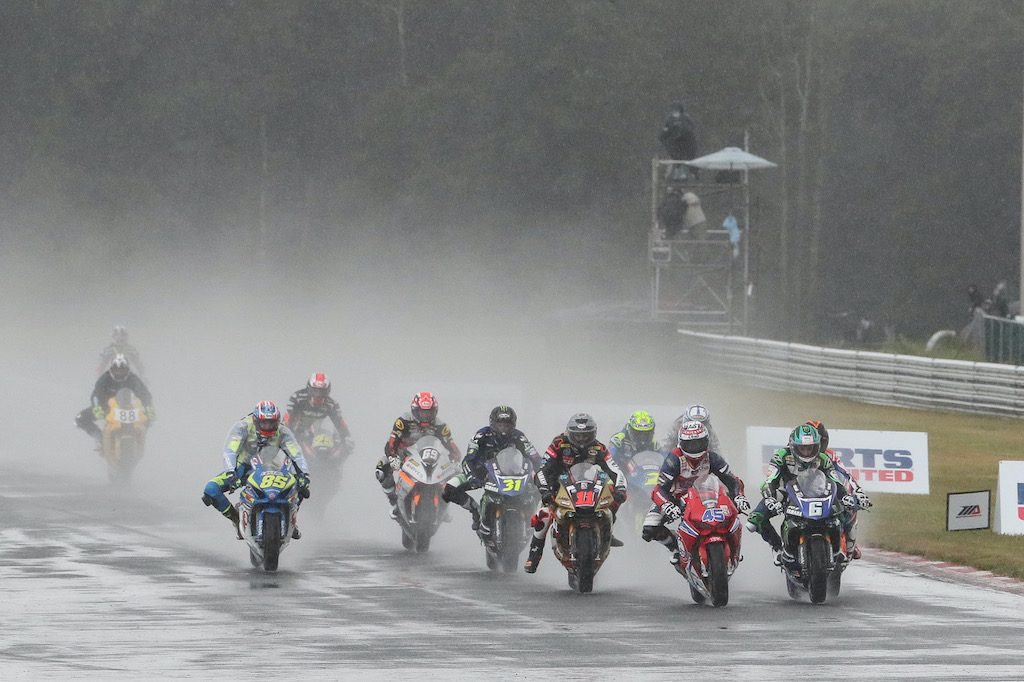
5 Keys to Successful Rain Riding
Soft arms and hands. This is probably the most important lesson that rain riding can teach a rider. I would estimate that at least 75% of track riders (racers included) place artificial limits on their speed by either supporting their body weight with their hands or simply holding on the bars too tightly. In the dry, most riders ride at a pace that only consumes 50-60% of the available grip of the tires, leaving a 40-50% grip margin that masks their imperfect technique. However, in the rain, that 40-50% is cut in half and leaves much less room for error.
Application: Since there are only four places your body contacts the bike (bars, tank, seat, pegs), if we eliminate the bars as a means of weight support then riders are only left with their legs. The #1 key to being able to have soft arms and hands is to anchor your body with your outside leg against the tank. This skill is mandatory in the rain and will allow you to instantly drop your times in the dry as well.
Get off the bike. When turning a bike in the wet, riders want to do as little as possible with the bars. In addition, bikes must move their center of gravity to the inside of the contact patch in order to turn. The solution to both of these problems in the wet is to get off the bike as much as possible. Probably 30% more than you would in the dry. When a rider gets off the bike, it allows the bike to go around a given corner with less lean angle (which is a big advantage in the wet).
Application: Make sure that you first separate from the tank in order to give yourself the ability to get off the motorcycle as much as you can. How far is too far? Mid corner, you should get your butt off at least to the point that the crack of your butt is over the very outside edge of the seat (one cheek on, one cheek off). Your head and shoulders should move off to the inside as far as they can without diminishing control (you should always be able to turn the bars lock to lock at mid-corner without “locking” your arms). All the while, pay attention to item #1 and be sure your arms are completely soft and relaxed.
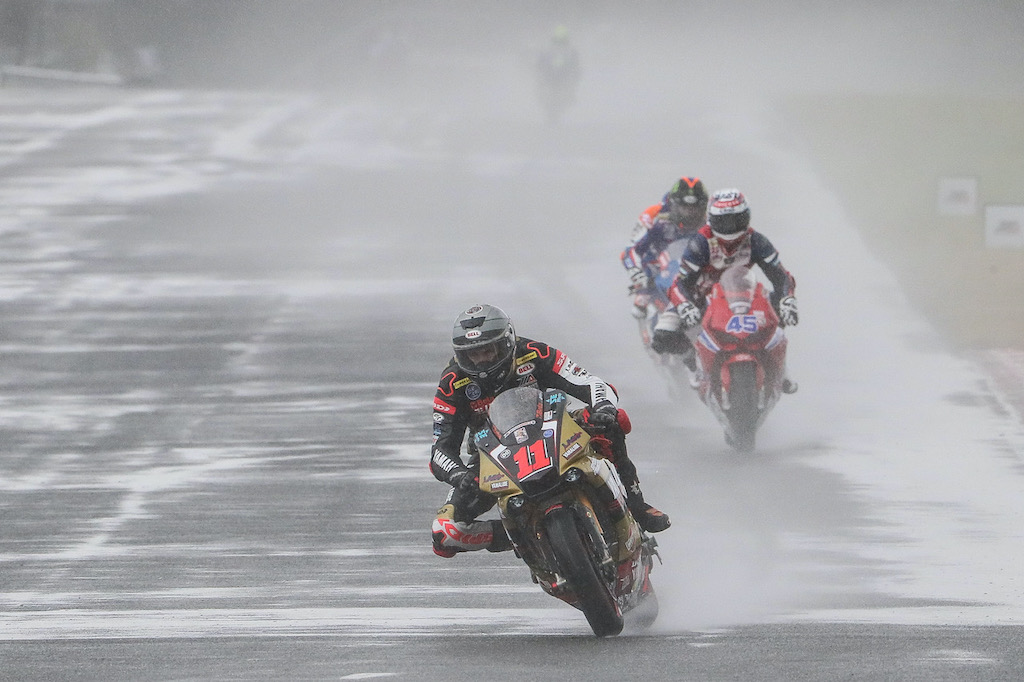
Shorten your turn duration. In the rain, you want to spend less time “arcing” through the corner. The longer you can keep the bike upright on the way into the corner, the longer you can safely brake (trail braking in the rain is tricky, and should be minimized whenever possible). In addition, riders should work to stand the bike up as soon as possible after the apex. The #1 cause for crashes (in both the dry and the rain) is not throttle input, but instead, it is bar input.
Application: The major difference between a 1000cc superbike and most other bikes is the duration for which it can spin the tire. As a result, superbike lines tend to be more “V” shaped than that of a smaller machine. In the rain, all bikes act like superbikes because the reduced traction allows them to spin the tire much easier. In the rain, ride your bike more like a superbike and straighten your entrances and exits.
Smooth inputs. Tires, in any riding conditions, always react poorly to sudden inputs. In the rain, the tolerance for these inputs is even smaller, so all braking, acceleration, and steering inputs must be made smoothly. With braking and acceleration, in particular, many riders do not have a habit of making their initial inputs smooth enough (braking) or early enough (throttle). Habits learned in the rain from the smooth application (and release) of the brake lever and throttle will make for faster, safer laps in all conditions.
Application: Follow the 25/75 rule with both the throttle and the brakes in the rain. They should take the same amount of time for your first 25% of throttle application as the remaining 75% – think early and smooth. With the brakes, the application is a two-step process; apply the brakes (first 25% of brake pressure), then brake (remaining 75% of brake pressure). It is critical to have weight transferred to the front wheel and the suspension set before ramping up brake pressure.
Use the available grip when upright. The bike can handle a lot more braking and acceleration than you think in the wet. This lesson is the last of the series because riders must apply the first 4 concepts mentioned here before being able to exploit this available grip. The two most critical requirements are that the bike must be as upright as possible and the application ramp of throttle and brake pressure must be much smoother than in the dry.
Application: The two words you should think about with throttle application in the wet (and dry) are “early” and “smooth”. The primary difference in rain strategy is the riders will typically turn up track for an extra moment after the apex to allow the bike to be more upright for a greater length of the drive. Riders will avoid the late corner-carving while on the gas that they do in the dry. When braking straight up and down, be sure to first apply the brake lever smoothly and then continue to slowly ramp up brake pressure each lap. You will be surprised how much braking force the tire can take (up to 80% of dry brake pressure on some tracks). This principle, which mandatory in the rain, will also expose under-utilization of available grip in the dry.
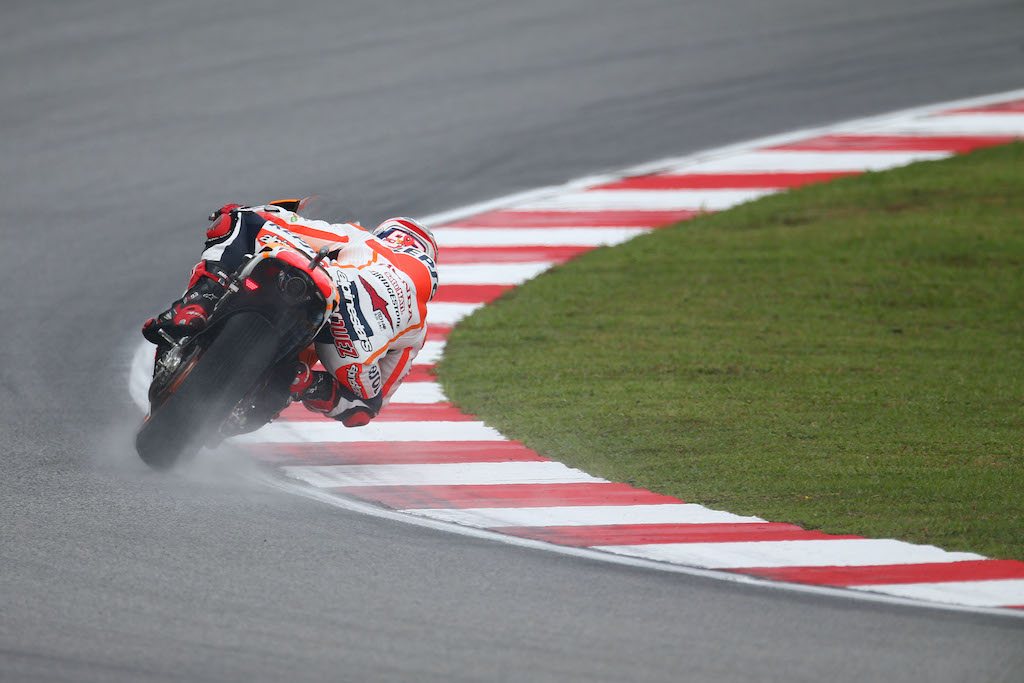
When riders apply these principles, rain riding not only can be a lot of fun, but it also can be a great learning experience that can translate into faster times in the dry. So, the next time it rains, break out those rain tires and have a good time.
Until next time – ride fast, ride safe!
Images: Brian J. Nelson, MotoGP.com
About The Author
Discover more from SportBikes Inc Magazine
Subscribe to get the latest posts sent to your email.
